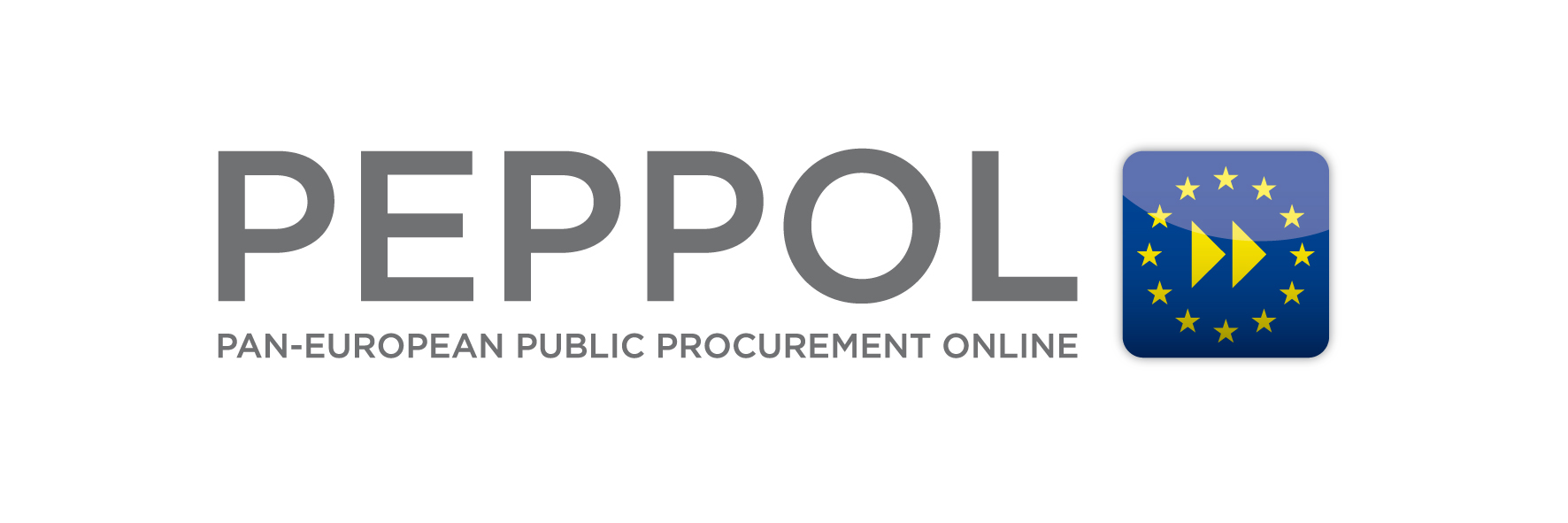The PEPPOL Business Interoperability Specification, “BIS” from here on after, has been developed by the OpenPEPPOL AISBL Pre Award Coordinating Community and is published as part of the PEPPOL specifications.
1. Principle and prerequisites
1.1. Scope
This guide aims to provide insight into transaction details for the transaction model T023 - Qualification Rejection. The transaction description is meant to be a standalone description to be used as a part of one or more procurement profiles. It describes syntax mappings, requirements, rules and examples.
The transactions, specified in this document are intended to be exchanged between the tendering systems of economic operators and contracting bodies. This means that it is expected that the parties have connected their systems to the internet, and that they have middleware in place to enable them to send and receive the transactions in a secure way, using an agreed syntax.
The content model of the transactions can also be used in procurement platforms or notification platforms, so that these platforms as well as procurement systems of economic operators and contracting bodies are based on the same information and process models, which makes them more interoperable. Even if platforms are not technically interoperable, the content model facilitates understanding the tendering documents and to participate in the tendering process.
1.2. Parties and roles
The following parties participate as business partners in this transaction, acting in the roles as defined below
| Business partner | Description |
|---|---|
Example of roles |
Customer |
The Customer is the legal person or organization who is in demand of a product or service. |
Examples of customer roles are Buyer, Consignee, Debtor and contracting body. |
Supplier |
The Supplier is the legal person or organization who provides a product or service. |
| Role | Description |
|---|---|
Contracting body |
The Contracting Authority or Contracting Entity who is buying supplies, services or tendering public works. |
Economic operator |
Party participating with a bid in a procurement process to sell goods, services or works. |
2. Transaction business and information requirements
The following table describes the transaction business and information requirements of "T023 - Qualification Rejection", it inherits from BII46 Subscribe to Procedure and "Trdm087 Qualification Rejection transaction".
3. Identification and description of the requirements
| ID | Requirement |
|---|---|
tbr87-001 |
The contracting body shall be identified. |
tbr87-002 |
The economic operator shall be identified. |
tbr87-003 |
The creation date and time of the message shall be specified. |
tbr87-004 |
Each message shall have a message ID and may refer to the ID of the qualification. |
tbr87-005 |
The Peppol profile and transaction names and versions shall be identified. |
tbr87-006 |
The message shall contain the Procurement Reference number. |
tbr87-007 |
The message may contain the Lot ID’s. |
tbr87-008 |
The message may contain the reason for the rejection. |
4. Data model: Syntax mapping and XML example
4.1. Data model and syntax mapping
The data model and syntax mapping for Qualification Rejection can be found at Syntax mapping for T023 - Qualification Rejection. The data model and syntax mapping explains how to use the UBL (or an underlying syntax) to support the Qualification Rejection information transaction requirements. It provides the syntax mappings from each UBL (or syntax) element to the Qualification Rejection information elements of this transaction.
4.2. Data model diagram
The following transaction data model illustrates the classes and information elements of T023 - Qualification Rejection.

4.3. XML example
The following XML example illustrates the structure of an instance of T023 - Qualification Rejection.
<?xml version="1.0" encoding="UTF-8"?>
<TendererQualificationResponse
xmlns="urn:oasis:names:specification:ubl:schema:xsd:TendererQualificationResponse-2"
xmlns:cac="urn:oasis:names:specification:ubl:schema:xsd:CommonAggregateComponents-2"
xmlns:cbc="urn:oasis:names:specification:ubl:schema:xsd:CommonBasicComponents-2">
<cbc:UBLVersionID>2.2</cbc:UBLVersionID>(1)
<cbc:CustomizationID>urn:fdc:peppol.eu:prac:trns:t023:1.0</cbc:CustomizationID>(2)
<cbc:ProfileID>urn:fdc:peppol.eu:prac:bis:p012:1.0</cbc:ProfileID>(3)
<cbc:ID schemeURI="urn:uuid">123e4567-e89b-12d3-a456-426614174000</cbc:ID>(4)
<!-- ReferenceNumber - Procurement project identifier-->
<cbc:ContractFolderID>765a9937-16d5-4513-92b4-cc9800925951</cbc:ContractFolderID>(5)
<cbc:IssueDate>2022-12-07</cbc:IssueDate>(6)
<cbc:IssueTime>14:44:33+01:00</cbc:IssueTime>(7)
<cac:SenderParty>
<cbc:EndpointID schemeID="9930">DE122268496</cbc:EndpointID>(8)
<cac:PartyIdentification>
<cbc:ID schemeID="0088">7300010000001</cbc:ID>(9)
</cac:PartyIdentification>
<cac:PartyName>
<cbc:Name>Beschaffungsamt des BMI</cbc:Name> (10)
</cac:PartyName>
</cac:SenderParty>
<cac:ReceiverParty>
<cbc:EndpointID schemeID="9946">500820007</cbc:EndpointID>(11)
<cac:PartyIdentification>
<cbc:ID schemeID="0088">7300010000001</cbc:ID>(12)
</cac:PartyIdentification>
<cac:PartyName>
<cbc:Name>Dutch Tulips Ltd</cbc:Name> (13)
</cac:PartyName>
</cac:ReceiverParty>
<cac:ResolutionDocumentReference>
<cbc:ID schemeURI="urn:uuid">6bc5f7fe-cb0f-4640-bda6-f1ee7f02576a</cbc:ID> (14)
</cac:ResolutionDocumentReference>
<cac:QualificationResolution>
<cbc:AdmissionCode>false</cbc:AdmissionCode> (15)
<cbc:Resolution>limited turnover</cbc:Resolution> (16)
<cbc:Resolution>criminal conviction - money laundering</cbc:Resolution>
<cbc:ResolutionDate>2023-01-07</cbc:ResolutionDate> (17)
<cac:ProcurementProjectLot>(18)
<cbc:ID>765a9937-16d5-4513-92b4-cc9800925951::1</cbc:ID>(19)
</cac:ProcurementProjectLot>
</cac:QualificationResolution>
<cac:QualificationResolution>
<cbc:AdmissionCode>false</cbc:AdmissionCode>
<cbc:Resolution>limited turnover</cbc:Resolution>
<cbc:Resolution>criminal conviction - money laundering</cbc:Resolution>
<cbc:ResolutionDate>2023-01-07</cbc:ResolutionDate>
<cac:ProcurementProjectLot>
<cbc:ID>765a9937-16d5-4513-92b4-cc9800925951::3</cbc:ID>
</cac:ProcurementProjectLot>
</cac:QualificationResolution>
</TendererQualificationResponse>5. Code lists
The following code lists for coded elements and identifier schemes are used in this transaction.
5.2. Code list for identifier schemes
| Business Term | Allowed Scheme | Applicable Xpath: |
|---|---|---|
Economic operator electronic address identifier |
schemeID attribute is mandatory and must use values from EAS codes |
cac:ReceiverParty/cbc:EndpointID/@schemeID |
Contracting body electronic address identifier |
schemeID attribute is mandatory and must use values from EAS codes |
cac:SenderParty/cbc:EndpointID/@schemeID |
Economic operator identifier |
schemeID attribute is mandatory and must use values from ICD codes |
cac:ReceiverParty/cac:PartyIdentification/cbc:ID/@schemeID |
Contracting body identifier |
schemeID attribute is mandatory and must use values from ICD codes |
cac:SenderParty/cac:PartyIdentification/cbc:ID/@schemeID |
6. PEPPOL Identifiers
PEPPOL has defined a Policy for use of Identifiers that specifies how to use identifiers in both its transport infrastructure and within the documents exchanged across that infrastructure. It also introduces principles for any identifiers used in the PEPPOL environment. The e-Tendering pilot adopts and extends the PEPPOL Policy in the following ways:
6.1. Party Identifiers used in business (UBL) documents
All party identifiers (cac:PartyIdentification/cbc:ID) have an optional scheme identifier attribute '@schemeID'. If used, the value shall be chosen from the code list ICD codes.
<cac:PartyIdentification>
<cbc:ID schemeID="0088">5790000435968</cbc:ID> (1)
</cac:PartyIdentification>| 1 | schemeID attribute is optional, but when used, the codes must be from ICD codes |
6.2. Electronic address identifier used in business (UBL) documents
All electronic address identifiers (cbc:EndpointID/@schemeID) use the Electronic Address Scheme code list (EAS), maintained by CEF (CEF Code lists).
Valid values are found here: EAS codes.
<cbc:EndpointID schemeID="0184">DK87654321</cbc:EndpointID> (1)| 1 | schemeID attribute is mandatory and must use values from EAS codes |
6.3. Document Identifiers used in business (UBL) documents
6.3.1. UBL Version ID
This transaction model is using the UBL 2.2 syntax. The namespace of the XML-message does only communicate the major version number. Since it is important for the receiver to also know what minor version of the syntax that is used, the element UBLVersionID must be stated with the value 2.2:
<cbc:UBLVersionID>2.2</cbc:UBLVersionID>6.3.2. Profile ID
ProfileID identifies what business process a given message is part of, and are connected to one business process, and may contain multiple document types.
Valid profile identifiers are described in the Syntax mapping for Qualification Rejection - Syntax mapping for T023 - Qualification Rejection - and the corresponding BIS document, see Main documentation site.
6.3.3. Customization ID
The PEPPOL Customization ID identifies the specification of content and rules that apply to the transaction. Profiles are connected to one business process (ProfileID), and may contain multiple transactions. Valid document instances shall contain corresponding ProfileID and CustomizationID.
| CustomizationID is a string without spaces. Which customization identification should be used, is based on which transaction is sent. |
| For implementers, please note that the process identifiers in the document instance MUST correspond to the SMP process identifier. |
| TransactionID | Transaction name | Short Description | cbc:CustomizationID |
|---|---|---|---|
T023 |
Qualification Rejection |
The contracting body sends the Qualification Rejection to the economic operator that has tendered. |
urn:fdc:peppol.eu:prac:trns:t023:1.0 |
7. Description of selected parts of the transaction
The transaction including business terms, business rules and code lists are based upon the definitions of "Trdm087 Qualification Rejection transaction" described in:
"Profile BII51 Qualification Rejection" (CWA 17027-116:2016).
7.1. Identifier
7.1.1. Qualification Rejection Identifier
The identifier enables positive referencing the transaction instance for various purposes including referencing between transactions that are part of the same process. Must be expressed as a UUID.
<cbc:ID schemeURI="urn:uuid">123e4567-e89b-12d3-a456-426614174000</cbc:ID>(1)| 1 | A transaction instance must contain an identifier, being expressed in uuid syntax |
7.2. Response issue date and time
Response issue date/time must be sent.
Response issue date is a xsi:date data type and is specified as "YYYY-MM-DD" where:
-
YYYY - four digits year
-
MM - two digits month (01 to 12)
-
DD - two digits day (0)
Response issue time is a xsi:time data type and is specified as "hh:mm:ss" where:
-
hh - two digits of hour (00 to 23) (am/pm NOT allowed).
-
mm - two digits of minute (00 to 59)
-
ss - two digits of second (00 to 59)
-
TZD - time zone designator (Z or +hh:mm or -hh:mm)
The response issue date and time refer to the date when of the issuance of the response.
| The response issue time must specify the time zone. |
<cbc:IssueDate>2022-12-07</cbc:IssueDate>(1)
<cbc:IssueTime>14:44:33+01:00</cbc:IssueTime>(2)| 1 | Format for the date has to be yyyy-mm-dd |
| 2 | Format for the time has to be hh:mm:ssTZD, granularity down to seconds and timezone |
7.3. Party identification
7.3.1. Sender Party
The party sending a Qualification Rejection to the party that initiated the request to qualify for a Procurement. The sender party in this case corresponds to the contracting body.
<cac:SenderParty>
<cbc:EndpointID schemeID="9930">DE122268496</cbc:EndpointID>(1)
<cac:PartyIdentification>
<cbc:ID schemeID="0088">7300010000001</cbc:ID>(2)
</cac:PartyIdentification>
<cac:PartyName>
<cbc:Name>Beschaffungsamt des BMI</cbc:Name> (3)
</cac:PartyName>
</cac:SenderParty>| 1 | Identifies the sender party’s electronic address and the scheme identifier for the electronic address |
| 2 | Identifies the sender party itself and the scheme identifier to resolve sender party’s identifier |
| 3 | Contains the sender party’s official name. |
7.3.2. Receiver Party
The party who is supposed to receive the Qualification Rejection. This is the same party that initiated the request to qualify for a Procurement. The receiver party in this case corresponds to the Economic Operator who handed in the Qualification to which this Qualification Rejection refers to.
<cac:ReceiverParty>
<cbc:EndpointID schemeID="9946">500820007</cbc:EndpointID>(1)
<cac:PartyIdentification>
<cbc:ID schemeID="0088">7300010000001</cbc:ID>(2)
</cac:PartyIdentification>
<cac:PartyName>
<cbc:Name>Dutch Tulips Ltd</cbc:Name> (3)
</cac:PartyName>
</cac:ReceiverParty>| 1 | Identifies the receiver party’s electronic address and the scheme identifier for the electronic address |
| 2 | Identifies the receiver party and the scheme identifier to resolve the receiver party’s identifier |
| 3 | Contains the receiver party’s official name including the organization’s legal form. |
7.4. Rejection Document Reference
The Rejection Document Reference contains a reference to the original Qualification Document that had been handed in by the Economic Operator (receiver party of this document) to qualify for the procurement.
<cac:ResolutionDocumentReference>
<cbc:ID schemeURI="urn:uuid">6bc5f7fe-cb0f-4640-bda6-f1ee7f02576a</cbc:ID> (1)
</cac:ResolutionDocumentReference>| 1 | The Rejection Document Reference must contain an identifier, being expressed in uuid syntax. |
7.5. Qualification Rejection Resolution
The Qualification Rejection Resolution is the central part of any Qualification Rejection. It contains all information required to inform about the Qualification Rejection.
The Qualification Rejection Resolution returned with this transaction will always be negative. If more than one lot have been aimed to qualify for and need to be rejected, one Qualification Rejection Resolution for each lot is expected.
<cac:QualificationResolution>
<cbc:AdmissionCode>false</cbc:AdmissionCode> (1)
<cbc:Resolution>limited turnover</cbc:Resolution> (2)
<cbc:Resolution>criminal conviction - money laundering</cbc:Resolution>
<cbc:ResolutionDate>2023-01-07</cbc:ResolutionDate> (3)
<cac:ProcurementProjectLot>(4)
<cbc:ID>765a9937-16d5-4513-92b4-cc9800925951::1</cbc:ID>(5)
</cac:ProcurementProjectLot>
</cac:QualificationResolution>| 1 | States that the Tenderer is not allowed to attend the further Procurement Process, only false is the allowed value here. |
| 2 | The decision leading to this Qualification Rejection Resolution can be explained in one or more Reason for Rejection elements. The Qualification Rejection Resolution is expected be te described in plain text. At least one Reason for Rejection element should be provided. |
| 3 | The Date at which the decision expressed in this Qualification Rejection Resolution was made. |
| 4 | The ProcurementProjectLot referenced in this Qualification Rejection Resolution |
| 5 | The ProcurementProjectLot’s ID |
